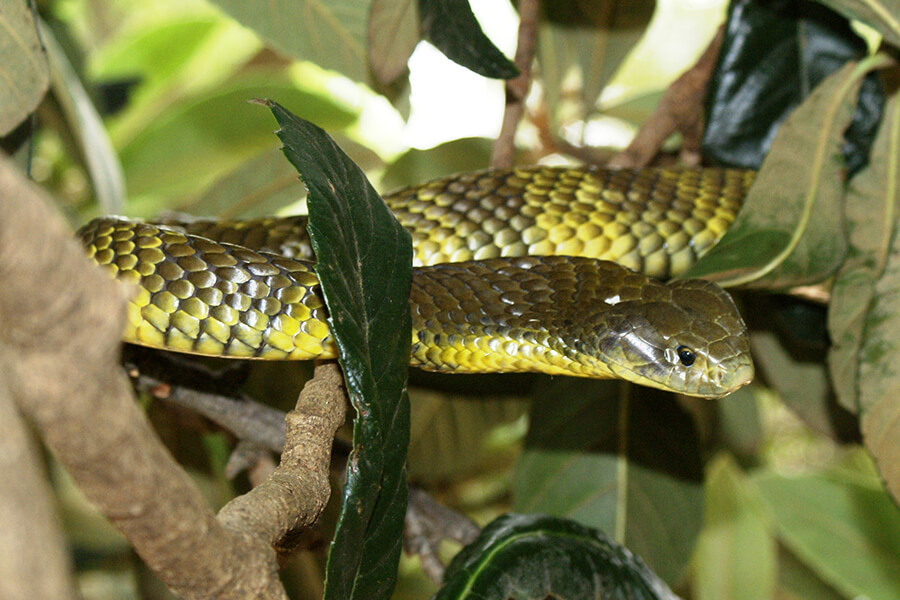Introduction
Tiger snakes (Notechis scutatus) are amongst one of the most remarkable yet been afraid reptiles found in Australia. With their striking look and powerful poison, these snakes evoke a combination of awe and caution. Observing tiger serpents in their natural surroundings can be an exhilarating experience for nature fanatics, wildlife photographers, and researchers alike. However, it's essential to approach this undertaking with respect for the animal's environment and an understanding of precaution to prevent snake bites.
In this detailed overview, we'll check out exactly how to securely observe tiger snakes in their natural environment. We will certainly cover subjects ranging from recognizing their actions and environments to first aid for serpent bites-- equipping you with knowledge to improve your experience while decreasing threats.
What is a Tiger Snake?
Tiger serpents are highly venomous snakes belonging to Australia, particularly Tasmania and coastal areas. They are understood for their distinct banded pigmentation looking like a tiger's stripes, which can range from yellowish-brown to dark brownish or even black.
Physical Characteristics
Tiger serpents are medium to large-sized serpents that can grow up to 2 meters long. Their bodies are durable, and they have a wide head that is noticeably broader than their Venom extraction and antivenom production in Australia necks.
Habitat Preferences of Tiger Snakes
These reptiles generally populate marshes, tidewaters, and seaside areas however can likewise be located near freshwater resources like rivers and lakes. Recognizing where these snakes live is vital for anyone looking to observe them safely.

Understanding Tiger Serpent Behavior
Are Tiger Snakes Venomous?
Yes, tiger serpents are among the most poisonous snake varieties around the world. Their venom includes neurotoxins that can cause major clinical difficulties if bitten.
Behavioral Traits
Tiger snakes are typically shy creatures; they choose to stay clear of human interaction. Nevertheless, they can end up being aggressive if intimidated or collared.
Where Can You Locate Tiger Snakes?
Tiger Serpent Habitat Exploration
To securely observe tiger serpents in their natural habitat, it's necessary first to recognize where they flourish. They have a tendency to favor:
- Coastal marshlands Mangroves Swamps Riverbanks
Best Locations for Observation
Some suggested places include:
- Tasmanian wetlands The shorelines of southern Australia National parks with water bodies
Safety Safety measures Prior to Observing Tiger Snakes
Understanding the Threats of a Tiger Serpent Bite
Although encounters with tiger serpents can be exhilarating, understanding the dangers involved is extremely important:
Recognize symptoms of a serpent bite: swelling at the site, discomfort radiating from the bite area. Know emergency contacts: Acquaint on your own with neighborhood emergency situation services. Carry a first-aid package especially outfitted for serpent bites.First Aid for Serpent Bites: What You Need to Know
Knowing what steps to take if bitten can conserve your life or another person's:
- Stay calm; activity enhances poison spread. Call for medical assistance immediately. Do not use ice or effort suctioning.
How to Securely Observe Tiger Snakes in Their Natural Habitat
When you determine to observe tiger serpents in the wild:

Equipment Needed for Observation
Essential Equipment Checklist
- Binoculars First-aid kit especially designed for snake bites Field guidebook on Australian reptiles Camera (with zoom capability)
Snake Bite First Aid Set Essentials
A fully equipped emergency treatment set ought to consist of:|Item|Function|| -------------------------------|-------------------------------|| Compression plaster|To incapacitate the damaged area|| Antihistamines|For allergic reactions|| Emergency situation get in touch with numbers|Quick gain access to during emergencies|
Interpreting Tiger Serpent Signals
Understanding just how tiger serpents interact through body movement helps viewers gauge when it's secure or hazardous:
Common Behaviors
Defensive stance: If coiled or elevated off the ground. Retreating habits: When they slowly pull back from prospective threats.Dealing With Prospective Encounters
Even with safety measures taken, an encounter may still happen throughout your monitoring journey:
Remain calmness; panicking just enhances risks. Slowly pull back without turning your back on the snake. Make your visibility understood verbally yet prevent abrupt movements.Frequently Asked Concerns Concerning Tiger Snakes
1. What ought to I do if I see a tiger snake?
Remain calm; observe from a range without troubling it.
2. Are child tiger snakes dangerous?
Yes, juvenile tiger snakes are born poisonous and may position dangers similar to grownups regardless of being smaller.
3. Just how typical are tiger serpent bites?
While events occur yearly in Australia, fatalities are uncommon because of punctual therapy availability.
4. Can I maintain a tiger snake as a pet?
Keeping wild tiger snakes as pet dogs is prohibited in many areas as a result of conservation laws.
5. What does a tiger snake bite look like?
Bite marks typically show two puncture wounds in addition to local swelling and discoloration.
6. Just how efficient is antivenom?
Antivenom therapy is extremely reliable when administered prompt after a bite.
Conclusion
Pressure Immobilization TechniqueObserving tiger serpents in their all-natural environment uses an exciting possibility for wildlife lovers but need to be approached with care and regard for both the creature and its atmosphere. By equipping yourself with knowledge concerning these interesting reptiles-- including comprehending their habits Safety and Prevention and precaution-- you can enjoy unforgettable experiences while significantly minimizing threats associated with encounters.

In recap, always focus on safety by preparing effectively prior to starting any kind of wildlife observation exploration-- particularly when managing some of nature's most poisonous creatures like the tiger snake!